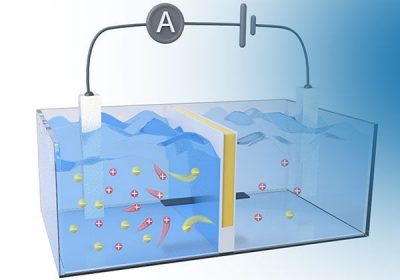Have you been using your toothbrush for more than three months? Scientists have discovered that there are potentially more than 7 million bacteria present on it. But can these bacteria really cause serious oral diseases? How often should you replace your toothbrush? We asked dentist Jean-Paul Souvrio of the Flemish Dental Association for advice.
“It makes sense that your toothbrush would have a lot of pathogens in it,” says Sofrio. “When you brush, you remove plaque. It is made up of different layers of bacteria. These end up in the brush when you brush your teeth. According to scientific research, after a period of three months, there are an average of 7 million bacteria. So if you use your toothbrush for six months in a row, It may contain more bacteria than a clean toilet seat.”
A dirty toothbrush can cause dental problems such as gingivitis and tooth decay.
Are these bacteria also dangerous?
In a Dutch study conducted by the TNO Research Institute, scientists found different types of bacteria. Think streptococcus, fungi, and also E. coli bacteria. This is a bacterium normally found in the gut of mammals. So a dirty toothbrush could theoretically cause dental problems like gingivitis and cavities. You can avoid this by rinsing the brush thoroughly with cold water. This way you are rinsing away food residue and bacteria. It is also important to store the thing with the head up. This way the brush can dry properly, and there is less chance of bacteria forming.”
When is the best time to replace my toothbrush?
“Experts recommend replacing your toothbrush every three months, for both manual and electric ones. A good tip is to do it at the start of each season. That way you forget it less quickly.”
Wide-spaced bristles clean the edges of teeth and gums more effectively.
To be clear, the replacement isn’t just because of the bacteria. The bristles of the brush will also gradually degrade the quality of the brush. After all, the widely spaced bristles clean the edges of the teeth and gums less effectively.
Is an electric toothbrush cleaner than a manual one?
“It’s not entirely clear right now. We’re noticing that people brush better with electric toothbrushes. This is because these devices do the typical circular motion for you, often removing more food residue as a result. With the manual version, it’s also possible to remove all food residue.” , but you will have to do more on your own.”
The correct brushing technique depends on the type of toothbrush you use.
• It is best to place a manual toothbrush at a 45-degree angle from the tooth to the gum line. Brush the teeth in small, circular motions.
• Do you have an electric toothbrush with a round head? Then follow the shape of the teeth and make sure to go over the entire surface of the tooth up to the gum line. Brushing. The toothbrush makes a circular motion for you.
• Do you have an electric toothbrush with a long head? Then, just as with a manual toothbrush, hold your toothbrush at a 45-degree angle to the tooth up to the gum line and make circular motions as you brush.
• Finally, spit out the excess toothpaste, rinse your toothbrush thoroughly with water, and let it dry upright.
Read also:
Do you brush your teeth better before or after breakfast? The answer is less obvious than you think
“Bleaching your own teeth can cause irreversible damage or burn your gums”: How to get white teeth in a safe way? (+)
“Half of all people between the ages of 18 and 65 have receding gums”: what exactly is it? And how do you solve it? (+)
Unlimited free access to Showbytes? Which can!
Log in or create an account and never miss a thing from the stars.

“Total coffee specialist. Hardcore reader. Incurable music scholar. Web guru. Freelance troublemaker. Problem solver. Travel trailblazer.”







More Stories
6 Stunning Earrings That Will Earn You Lots of Compliments (Now at a Big Discount)
The 25-year-old quickly became a cryptocurrency millionaire, but it could have ended differently
Nvidia Stocks Rise: Will Crypto AI Follow?